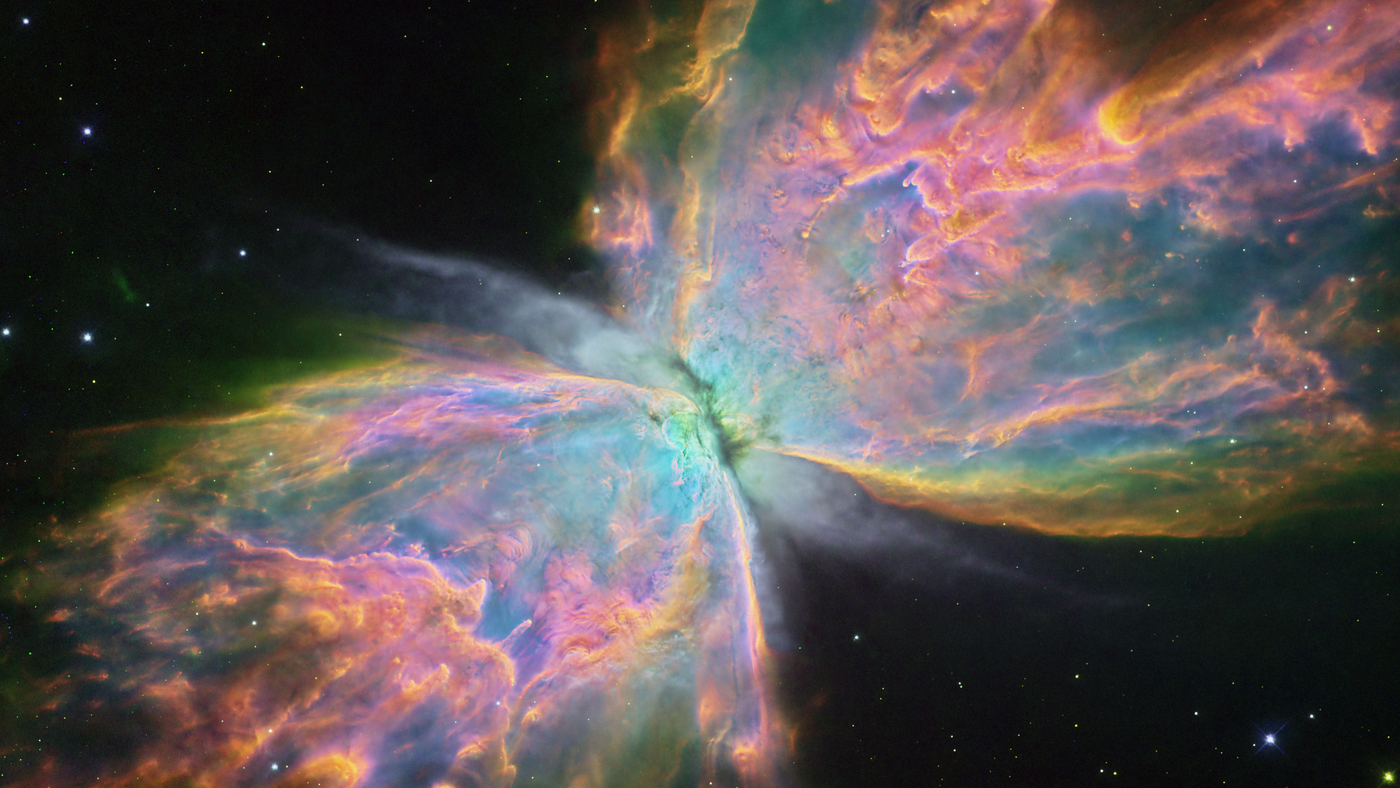Why do some nebulae line up with the galactic plane?
3 min read

Ten years after a strange alignment of planetary nebulae was discovered near the center of the galaxy, the mystery appears to have been solved by the authors of a new study. By analyzing more than 100 objects, the team found evidence that the aligned nebulae formed from binary stars rather than a single star.
When a star with a mass up to eight times the mass of the Sun approaches the end of its life, its outer layers expand, increasing its diameter by millions of kilometers. This phase, known as a red giant, precedes the “death” of the star itself.
As it loses pressure due to lack of fuel to perform nuclear fusion, the red giant ejects its layers, which in turn form an emission nebula (the nickname “planetary nebula” is misleading, given its association with planets).
In the nebula’s core, stellar remnants – the “naked” core – still glow, illuminating the cloud of gas and dust around it with ultraviolet light, ionizing components of the nebula. The result of ionization is the emission of brightness that characterizes its constituent elements (except when there is little ultraviolet light for the amount of mass in the nebula, in which case it will become a reflection nebula).
10 years ago, researcher Brian Reese discovered that some of these nebulae located near the Milky Way’s bulge (the thickest, yellowest region in the galaxy) align the same way and are almost parallel to the plane of the galaxy, without anyone knowing how to explain why.
Now, new research by a collaboration of scientists at the University of Manchester and the University of Hong Kong, using the European Southern Observatory’s Very Large Telescope in Chile and the Hubble Space Telescope, has not only confirmed the alignment, but also found something in between. . Common: All aligned nebulae are formed by nearby binary stars.
In the universe, it is very common for stars to form in pairs, spend their lives revolving around each other and receive the name of binary stars. When one “dies” to give birth to a planetary nebula, its companion stays in its orbit, which, in some cases, seems to affect the alignment that Riess detected.
According to the new research, which analyzed 136 planetary nebulae in the galactic bulge, along with 40 other nebulae used in the initial discovery study, the alignment with the galactic plane is found only in planetary nebulae whose remnants contain a nearby star — at a distance smaller than the distance between Mercury and our sun.
At such short distances, the companion completes a loop around the main ring at high speed and can spin until it falls inside it. This indicates two outcomes: the first is that this orbital motion can shape the shape of the nebula, and the second is that binary systems of nearby stars form preferentially with their orbits aligned with the galactic plane.
The study has been published in Astrophysical Journal Letters.
source: Astrophysical Journal LettersAnd University of Manchester

“Entrepreneur. Music enthusiast. Lifelong communicator. General coffee aficionado. Internet scholar.”

:strip_icc()/s04.video.glbimg.com/x720/11792055.jpg)

:strip_icc()/s03.video.glbimg.com/x720/11786998.jpg)